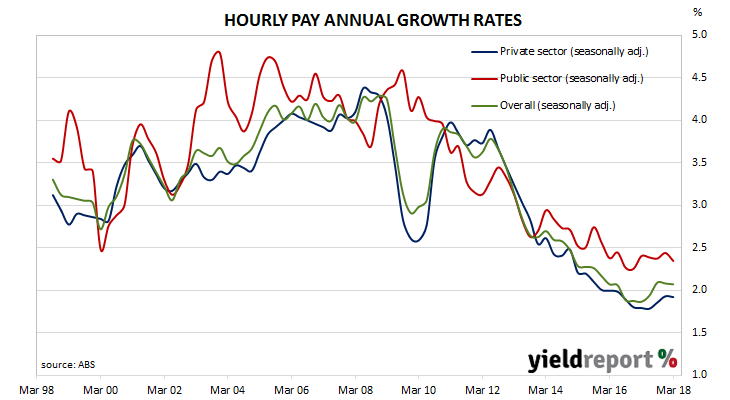Each quarter the Australian Bureau of Statistics (ABS) surveys around 3000 enterprises regarding a sample of jobs in each workplace to measure changes in the price of labour across 18000 jobs. The results are used to construct a wage price index (WPI) in a manner similar to the construction of the Consumer Price Index (CPI). Changes in the WPI over time provide a measure of changes in wages and salaries independently of changes in the quality or quantity of work performed.
According to the latest wage price index (WPI) figures published by the ABS, hourly wages grew by 0.5% in the March quarter, the same as in the December quarter after it was revised down from 0.6% but under the +0.6% increase which was expected. The year-on-year growth rate remained unchanged at 2.1% (after revisions) which makes this quarter the third one in which the annual growth rate has not fallen. However, it is still barely just above the lowest growth rate since the beginning of the series in 1999.
Commonwealth Bank senior economist Belinda Allen said larger wage increases would be delayed until labour supply was soaked up to a greater degree. “Today’s numbers suggest that any thought of a return to more normal wages growth is still some time away. Despite strong employment growth over the past year, there has yet to be any flow through to higher wages. This suggests there is still a significant amount of spare capacity in the labour market. Underemployment and underutilisation rates remain elevated.”

The figures in the report were large as expected and they did little to change bond yields which had started the day higher after strong US retail sales figures. By the end of the day, the 3 year bond yield had added 3bps to 2.27%, 10 year yields had increased by 6bps to 2.90% and the local currency had moved up by around 0.4 US cents to 75.15 US cents.

